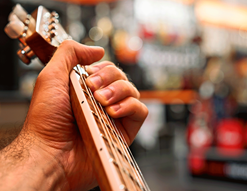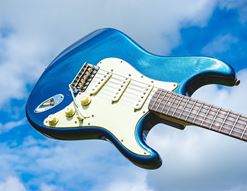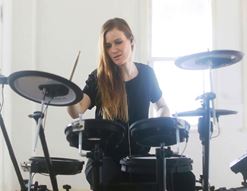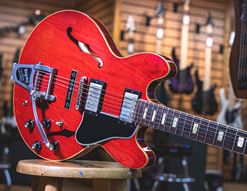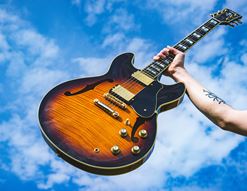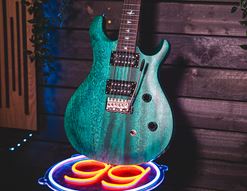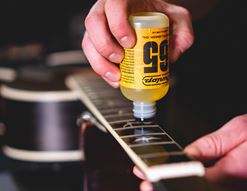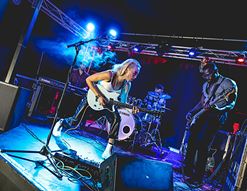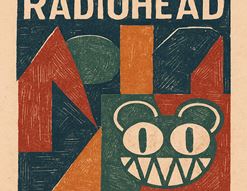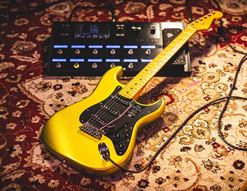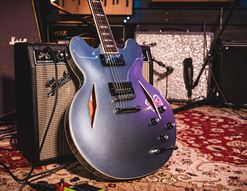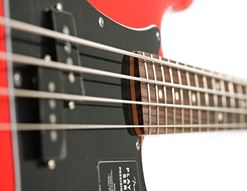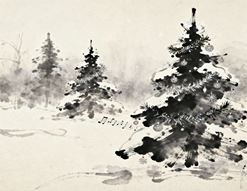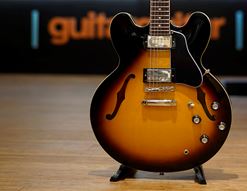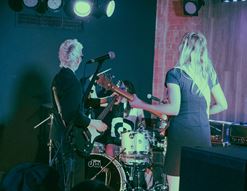Are you a Tool fan? Their complex, metaphysical brand of prog rock is a spellbinding mix of mysticism, aggression and otherworldliness. Despite hardly being 'accessible pop', Tool have become one of the biggest bands in the world, without pandering to either label or audience. Fans can get pretty deeply involved in the band, and I guess I can understand why, when they offer so much.
Tool’s Adam Jones has one of the best heavy guitar tones out there. His thick, chewy Les Paul sound is full of texture and power, yet it contains a level of fluidity that helps colour and shade the complex music made by him and his band.
Throughout the years, Jones’ overall sound has remained relatively constant, so with today’s guide, I plan to highlight the main points to follow - both gear-wise and from a playing perspective - in order to get that inimitable Tool tone!
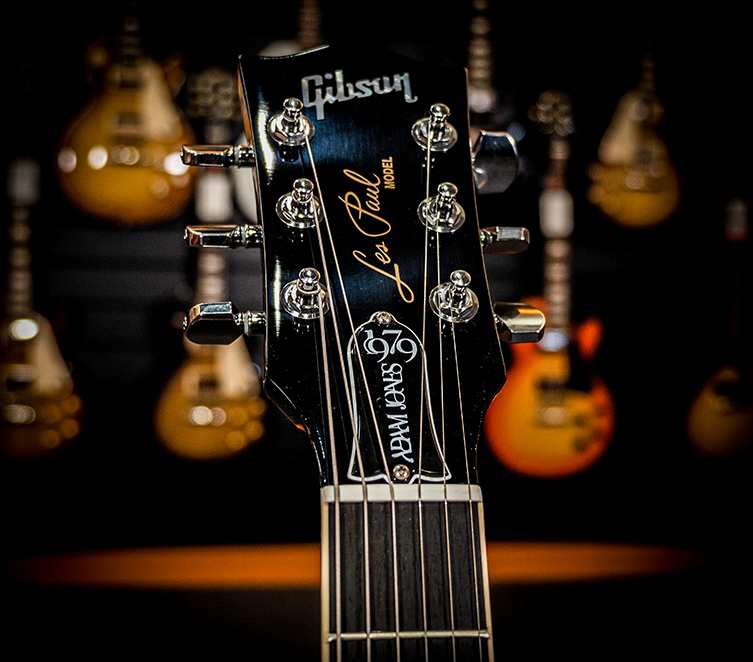
How to Sound Like Tool - Contents
Guitars: Adam’s Les Pauls and the Mystery of Silverburst
Seymour Duncan Distortion Humbucker
Jambi (the ‘Pull-Through’ technique)
Not Everybody Has a Danny Carey
Guitars: Adam’s Les Pauls and the Mystery of Silverburst
Tool fans will know that Jones favours - almost exclusively - a small collection of Gibson Les Paul Customs from 1979. His have the famous Silverburst finish, which at the time was a pretty short-lived colour.
Jones has used these Customs since Tool’s first EP Opiate, and ever since. Back in the 90s, these were simply older second hand guitars, but the mythos of the Silverburst has since risen amongst alter-rock fanbases.
If you want a deep dive into the specifics of this special finish, please click through to my blog Silverburst Guitar: The Story Behind the Finish. Today, I’ll summarise and keep things in the context of Tool.

Jones’ Silverburst guitars actually look more green than anything else, and there are lots of forum posts suggesting reasons for this. In truth, it's just the nitrocellulose finish darkening as it ages. The metallic paint back then contained chromed aluminium (today’s equivalent uses chromed polyester or the metallic element) and some players - including Jones himself - reckon that the paint contributes to the sound of the guitars. The guitars themselves were notoriously heavy, but almost all late 70s Les Pauls (particularly those with mahogany and maple ‘sandwich’ bodies) were backbreakers. Did the paint really add something to this?
I’ll diplomatically leave that for you to decide for yourself, but the point here is that he plays almost nothing but these guitars.
Silverburst Les Pauls
Now, in this age of vintage reissues and limited runs, there are usually a few options on the market for those looking for a Silverburst Les Pauls. As of writing, there is a wonderful Epiphone signature model, the Adam Jones 1979 Les Paul Custom, and it’s a pretty excellent take on those old vintage Customs, and it’s a bunch less expensive, too.
These Epiphones have the proper ‘open book’ headstock (the Gibson one, in other words), an accurate looking antique silverburst finish and the correct Seymour Duncan pickup in the bridge. There’s a lot to love here, and if you don’t mind it not saying ‘Gibson’ on the headstock, then you can have it all for a pretty reasonable price.

Gibson did release a limited edition Adam Jones Les Paul Standard, and I believe that’s still available at time of writing. This USA model is actually less close to Adam’s own models than the Epiphone one since the Gibson Adam Jones LP doesn’t have the Custom trimmings (extra binding, block inlays, split-diamond headstock inlay) or the SD humbucker. That said, if you want an American Gibson Les Paul in Silverburst then this Adam Jones signature is actually the most affordable way to get one. They are excellent guitars - and are ‘official’ Adam Jones signature guitars - but the Epiphones actually nail the style more.

The other end of the price bracket is to ‘go big’ and opt for a Gibson Custom Shop Les Paul Custom in Silverburst. These are top dollar guitars with corresponding prices, but they are the real deal and will also age into that lovely green shade in future years, since they are finished in nitrocellulose. Or will they, now that nobody smokes in venues anymore?
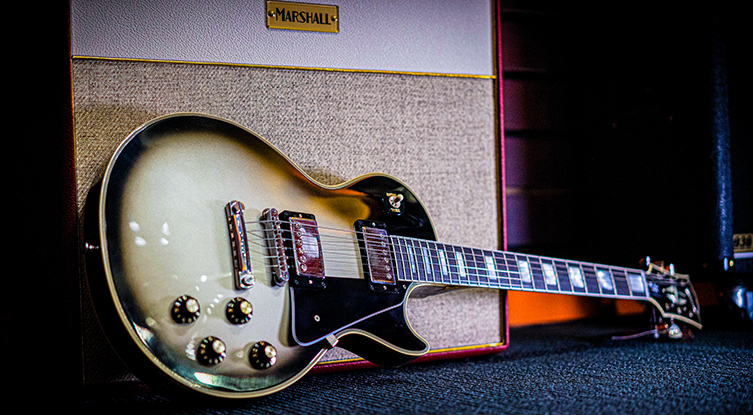
Seymour Duncan Distortion Humbucker
For years, Adam Jones wouldn’t tell anybody which model of pickup he used in the bridge position of all of his Les Pauls, even though it obviously said ‘Seymour Duncan’ on it. This big secrecy was apparently to stop other players from idly copying his sound, which I suppose is fair enough given that I’m literally writing this blog on how to do just that!
Anyway, the secret has long since been revealed as being a pretty straightforward Seymour Duncan Distortion bridge pickup.
So, why this pickup? Well, looking at its specs, there are lots of upper mids wound into the pickup, which is chiefly where Jones operates, frequency-wise. His use of feedback often depends on being able to push those upper mids, and doing that is easier still when the output is as hot as these. We’re talking 16.6k resistance, and also with a ceramic magnet, so there’s lots of harmonic content being captured from the strings.
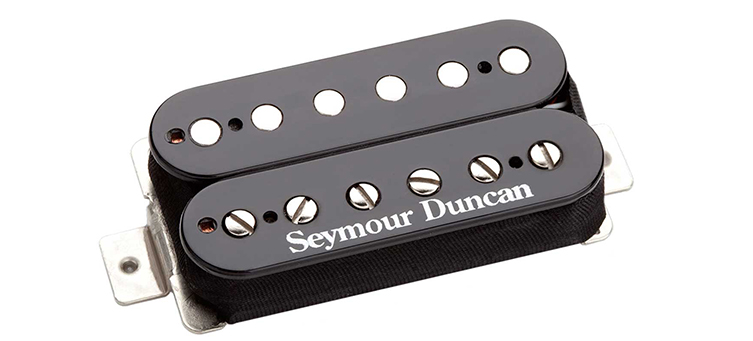
If you are looking to go for this pickup, you can buy it on its own or with a matching neck pickup as part of the Seymour Duncan Mayhem set. As somebody who has owned this set of pickups, I can report that the neck pickup - despite being talked about as Seymour Duncan’s highest output neck humbucker - is absolutely gorgeous sounding, and very expressive.
Adam Jones’ Guitar Amps
Jones’ tone is very thick and dense, rich in upper midrange so that it stands out from Justin Chancellor’s bass sound. His is not a traditional ‘scooped’ metal sound at all. It’s a good lesson for any guitarist in terms of EQ: that upper mid area is where all of your power lies!
Adam has always used a multiple amplifier set up (one guitar into three amps via a splitter box), and this has most often included a bass amp as well as at least one guitar amp. I’m run through them here:
- Diezel VH4 100w: Jones’ main source of tone, this is paired with a MESA/Boogie 4x12 cab.
- Marshall 1976 Super Bass head: technically a bass amp, run through a MESA 2x15 bass cab.
- 3rd amp: goes between either another Diezel VH4, a Bogner Ubershall or a Rivera Knucklehead Reverb.
This is Jones’ main setup, with the Diezel, the Marshall and one other choice from the above three. A blend is achieved by micing each with standard microphones such as a Shure SM57 and a Sennheiser 421.
I should note that, whilst the Marshall is indeed a bass amp, it’s not unusual for guitarists to like using them too. The same goes for the Fender Bassman of course, which is revered by guitarists (including Hendrix: it was his main studio amp) even though it was designed for bassists! The Bassman was also the blueprint for Marshall’s first amp designs, anyway, so it’s all relative.

In addition, it has been reported that Jones has used a Sunn Beta Lead amp and a Roland JC120 Jazz Chorus in the studio, too.
Why does he use three amps? I suppose it’s partly because he is the only guitarist in the band, and the sheer size of his rig allows him the sound of two guitarists. It could also be that the sonic ‘failings’ of one amp (not enough low end or whatever) is corrected by the benefits of another. It may also be that, with amps changing their sound from venue to venue depending on external factors like room size and so on, having a changeable combination of three amps is the easiest way to get an effective combination night after night.
Or, he may just like doing things that way and it works for him!
Strings and Picks
In terms of strings and picks, it’s simple stuff here. Jones plays almost exclusively in drop-D tuning, and uses Ernie Ball 2215 Skinny Top Heavy Bottom strings, which are gauge 10-52. That extra heft in the low end helps keep those drop-D riffs nice and tight, particularly with the Gibsons’ shorter scale length of 24.75”.

For picks, Jones likes the Dunlop nylon style, mainly in .73mm but also in .88mm thickness. These picks are pretty flexible, and he has noted before about how it is important for him to have some ‘give’ in his picks in order to get the rhythm feel that he prefers.
Effects
Adam Jones is no stranger to effects, and peppers his parts with them throughout Tool’s repertoire. I’d say that delay and wah effects are probably the most essential for capturing those rich, tangled textures, but here’s a list of the pedals that have been seen on his board over the years:
- Dunlop Heil Talkbox
- BOSS BF-2 Flanger
- BOSS DD-5 delay
- MXR M102 Dynacomp
- MXR M133 Microamp
- Goodrich 120 Volume pedal
- Line 6 DL4 Delay Modeller
- Dunlop Crybaby 535Q wah
- Gig FX The Chopper
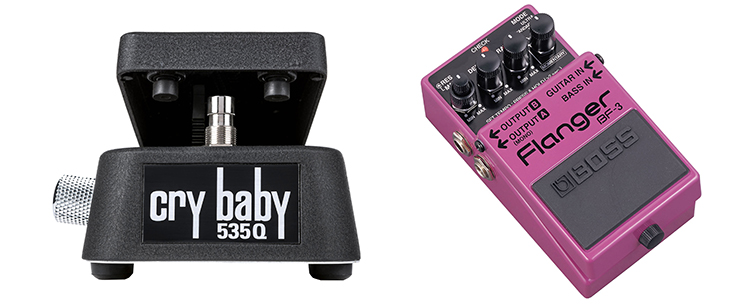
How to Play like Adam Jones
So, that’s the equipment that Adam Jones uses in order to get his awesome sound, but what of his playing techniques themselves? Here are a few things to consider and incorporate into your playing, to give it that mystical TOOL edge.
Leave Space, Use Repetition
Adam Jones realises that, within Tool, there is a great lead singer, a phenomenal drummer and a bassist who plays lots of leads and melodies. They are almost all soloists in themselves, so there isn’t tons of room for more solos from the guitar. Jones does take plenty, but the focus of his style (and intentions, I believe) is not there.
Instead, he creates a lot of space in his sound by using comparatively few notes and plenty of ambience, and by repeating lots of patterns and figures until they become almost mantra-like in their consistency. Lots of prog metal bands heap on the elaborate parts, but Tool tend to anchor things - at least guitar-wise - with repetitive ambient and rhythmic parts.
You’ll also hear Jones often playing the same riff or pattern over an otherwise changing musical landscape, which is an interesting thing to consider. In Tool, the bass will most often have the job of heralding chord changes and harmonic information (even melodic lines), whilst the guitar holds down a repeating rhythmic figure alongside the drums. A great example of this is the intro to The Grudge, from Lateralus. It seems that the bass and guitar have actually switched roles for this whole intro! From a compositional and arranging perspective, this is a cool thing to try out yourself and experiment with.
Drop D for the Win
Are there any Tool songs that are not written in drop-D tuning? I’m being facetious here - there are definitely at least three songs that are not in drop-D haha - but it’s a safe bet that, in order to get your riffs coming out as Tool-like as possible, playing in the key of D, with drop-D tuning, is the way ahead. The band does often tend to stick to the basic box shapes too, so you can do the same and achieve similar results.
Think Textures, Not Notes
Whether Adam Jones is able to shred or not (I expect he probably can), he certainly doesn’t over-indulge in Tool. He is a master of getting textures directly from his guitar, whether that is tremolo picking the same note whilst moving his picking hand to get different harmonics from the string (Lateralus), or using the edge of the pick to ‘slice’ across the strings for a very unorthodox sound (the start of the solo to Stinkfist).
Texture also applies to his wah technique, which is almost never a case of rocking it back and forth in time with the song to go ‘wacka-chacka’. He uses it much more like a cutoff frequency control on a synthesizer; a real-time filter that can emphasise different frequencies.
Inventive Hand Techniques
Some Tool riffs sound deceptively straightforward until you actually see how they are played. Adam does some very unusual things with his fretting hand, and whilst you can probably busk your way around them by playing ‘normally’, the devil is really in the details. Copping his actual techniques in certain circumstances will help you properly nail the sound, and understand more about the player who created the part.
Here are two examples to get you started…
Jambi (the ‘Pull-Through’ technique)
This is a tricky one to explain, but listen to the riff. Can you hear how it’s a triplet of notes followed by a group of palm muted open notes? Okay, now you can fake it by playing some pull-off notes, but that is not what’s going on here. What’s actually happening is really quite strange, and may even be the result of a mistake that sounded good, I’m not too sure!
Some people call it a ‘muted left-hand strum’, and others say it's a ‘pull-through’ technique.
To really nail it, you need to realise that it’s actually a combination of the following:
- Palm mute everything, then play the first note as usual.
- Then you slide your finger (the one fretting the note) off the low D string onto the A string next to it. It’s like a pull-off, but instead of moving your hand away, you shift the finger downwards. That finger should end up passing the A string and rest on the middle D string.
- This action will sound a second note (the open D) and then also the open A string next to it.
Get the timing right and you get that amazing sounding ‘roll’ or pull-through sound. Check out this playthrough below to see this technique in action!
Aenima (Hammer slaps)
This is another left-hand technique employed by Jones to create a subtly different sound. Again, the riff itself sounds reasonably straightforward, but if you try playing it conventionally, you will not get the sound you want! Here’s what you need to do instead:
With the guitar in drop-D, hammer onto the second fret of the bottom three strings with your left hand. You don’t pick the note at all, it’s all from the force of your fretting hand.
- Pull-off and hammer back on again.
- Pick the open D and G strings to get that sharp sounding upper note of the riff. This is the only time in the whole riff that you use a pick.
- Go back to the ‘hammer slaps’ (YouTuber Ben Eller’s term, which I like!) for the remainder of the notes.
- Judicious muting with both hands will help sell the rhythmic elements of the riff.
I feel like this technique is quite drum-influenced, so it might pay to think of it that way when you play: it certainly helped me!
Not Everybody Has a Danny Carey
So, we reach the end of this guide to sounding like Tool’s Adam Jones. I’ve covered the gear and I’ve looked at the numerous ways in which he employs unusual techniques to create interesting and arresting music.
It’s hopefully fair and okay for me to say that the ‘lead guitarist’ in Tool is actually drummer Danny Carey. His exceptional and elaborate drumming is not only the foundation of the band’s sound, but it’s most of the ‘wow’ moments, too. That’s not to say that Adam Jones is any sort of slouch on the guitar! Far from it: his is an instantly recognisable and oft-imitated sound, and as a player, he is gifted with taste, restraint and a sense of curiosity which brings his playing into quite left-field places. It’s just that he isn’t a limelight seeker, which is maybe unusual for a stadium-filling prog metal guitarist!
All the more refreshing, if you ask me. Whether you are here today to find out about his gear, or his techniques, I hope you’re coming away from it with some value.
Thanks for reading.



